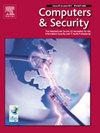ARLHNIDS-IoT:用于物联网网络安全的精确且强大的轻量级混合nids
IF 4.8
2区 计算机科学
Q1 COMPUTER SCIENCE, INFORMATION SYSTEMS
引用次数: 0
摘要
物联网网络的快速增长加剧了物联网设备的脆弱性,使其成为复杂攻击者的目标。这些漏洞危及敏感用户数据,并中断合法用户的服务。因此,保护物联网设备是防止网络攻击和充分实现物联网技术优势的关键研究领域。目前已经提出了各种解决方案,包括防火墙、防病毒软件和入侵检测系统(IDS)。防火墙和防病毒软件只能通过过滤已知威胁和阻止未经授权的访问来提供一定程度的安全;它们主要依赖于预定义的规则,根据规则对数据包进行过滤,而不监控其在网络中的行为。防火墙在网络边界有内联模式和透明模式两种。相比之下,IDS通过持续监视网络流量和系统活动提供更全面的保护,使用基于签名和基于异常的检测技术来识别以前未见过的威胁(或零日攻击)。它通常在监控模式下工作,而不是与交通流内联。然而,为物联网环境设计有效的IDS存在重大挑战。物联网设备有限的计算资源使得高效处理高维IDS数据集变得困难。另一方面,数据集不平衡是设计高效入侵检测系统的另一个主要障碍(因为它阻碍了入侵活动的准确识别,导致检测性能偏差)。针对这些挑战,本文提出了一种新型的混合网络入侵检测系统,该系统集成了先进的过采样、特征选择技术和智能检测模型,以提高物联网网络中攻击检测的准确性,缩短入侵检测的处理时间。首先,利用改进的生成对抗少数过采样(GAMO)和模糊c均值聚类技术对不平衡的IDS数据集进行平衡;在该框架中,通过集成注意机制对现有的GAMO模型进行改进,使其能够关注网络流量中的重要模式,从而获得有效的性能。采用OPTUNA技术对模糊c均值聚类算法的超参数进行了优化。其次,利用改进的灰狼优化(GWO)技术对初始化阶段的相关系数进行积分,引入新的目标函数进行特征选择;这种改进的特征选择方法减少了资源约束,并且与物联网网络兼容。基于签名的入侵检测系统(SIDS)使用多数投票分类器来检测已知的攻击。投票分类器集成了7个基于树的模型,这些模型使用OPTUNA技术进行优化。另一方面,提出了基于异常的入侵检测(AIDS)方法,该方法利用双深度q网络对未知DoS攻击进行检测。提出的“ARLHNIDS-IoT”模型集成了小岛屿发展中国家和艾滋病,这样一来,传入的基于物联网的网络流量首先由小岛屿发展中国家进行分析,并将其与已知攻击特征的数据库进行比较。当找到匹配时,攻击被迅速分类,便于快速检测已知威胁。如果小岛屿发展中国家未能识别攻击,则将流量转发给艾滋病进行进一步评估。艾滋病检查任何与正常行为的偏差,以识别新的攻击。所提出的策略提高了准确性,最大限度地减少了误报,并增强了物联网的安全性。采用UNSW-NB15、BoT-IoT和CICIoT2023三个基于物联网的数据集对提出的“ARLHNIDS-IoT”模型的有效性进行了评估。UNSW-NB15、BoT-IoT和CICIoT2023数据集的实验结果表明,该方法减少了资源限制,预测时间分别缩短了5.917、13.523和37.751 s。此外,在unws - nb15、BoT-IoT和CICIoT2023数据集上,该方法分别提高了6.06%、8.12%和3.86%的召回率,提高了5.69%、7.95%和2.65%的f1分数,解决了数据不平衡的挑战。SIDS模型在UNSW-NB15、BoT-IoT和CICIoT2023数据集上的准确率分别为92.89%、99.19%和98.31%,AIDS模型在UNSW-NB15、BoT-IoT和CICIoT2023数据集上的准确率分别为89.56%、90.92%和94.74%。根据最新的先进技术对所提出的模型进行了评估,证明“ARLHNIDS-IoT”模型优于其他当代方法。本文章由计算机程序翻译,如有差异,请以英文原文为准。
ARLHNIDS-IoT: An accurate and robust lightweight hybrid-NIDS for IoT network security
The rapid growth of IoT networks has heightened vulnerabilities in IoT devices, making them targets for sophisticated attackers. These vulnerabilities compromise sensitive user data and disrupt services for legitimate users. Therefore, securing IoT devices is a crucial research area to protect against cyber-attacks and fully realize the benefits of IoT technologies. Various solutions have already been proposed, including firewalls, antivirus software, and intrusion detection systems (IDS). Firewalls and antivirus software provide only some level of security by filtering known threats and blocking unauthorized access; they primarily rely on predefined rules and filter the packet according to rules without monitoring its behavior in the network. The firewall functions in either inline mode or transparent mode at the network boundary. In contrast, IDS offers more comprehensive protection by continuously monitoring network traffic and system activities, employing both signature-based and anomaly-based detection techniques to identify previously unseen threats (or zero-day attacks). It typically functions in monitoring mode rather than inline with the traffic flow. However, designing an effective IDS for IoT environments presents significant challenges. The limited computational resources of IoT devices make it difficult to process high-dimensional IDS datasets efficiently. On the other hand, dataset imbalance is another major hurdle (as it hinders the accurate identification of intrusive activities, leading to biased detection performance) in the design of efficient intrusion detection systems. To address these challenges, this paper proposes a novel hybrid network intrusion detection system that integrates advanced oversampling, feature selection techniques, and intelligent detection models to enhance the attack detection accuracy and reduce the processing time of intrusion detection in IoT networks. Firstly, the imbalanced IDS dataset is balanced with the help of the modified generative adversarial minority oversampling (GAMO) and fuzzy C-means clustering techniques. In the proposed framework, the existing GAMO model is modified by integrating the attention mechanism to focus on significant patterns in the network traffic and achieve efficacious performance. Hyperparameters of the fuzzy C-means clustering algorithm are optimized using the OPTUNA technique. Secondly, feature selection is performed using the modified Grey Wolf Optimization (GWO) technique by integrating the correlation coefficient in the initialization stage and introducing a novel objective function. This modified feature selection approach reduces the resource constraint and is compatible with IoT networks. Signature-based IDS (SIDS) is designed using the majority voting classifier to detect known attacks. The voting classifier ensembles seven tree-based models, which are optimized using the OPTUNA technique. On the other hand, anomaly-based IDS (AIDS) is proposed, which utilizes the double deep Q-network for unknown DoS attack detection. The proposed “ARLHNIDS-IoT” model integrates SIDS and AIDS in such a way that the incoming IoT-based network traffic is first analyzed by SIDS, which compares it to a database of known attack signatures. When a match is found, the attack is promptly classified, facilitating rapid detection of known threats. If SIDS fails to recognize an attack, the traffic is forwarded to AIDS for further assessment. AIDS inspects any deviations from normal behavior to identify new attacks. The proposed strategy enhances accuracy, minimizes false alarms, and bolsters IoT security. The effectiveness of the proposed “ARLHNIDS-IoT” model is evaluated using three IoT-based datasets: UNSW-NB15, BoT-IoT, and CICIoT2023. Experimental findings from the UNSW-NB15, BoT-IoT, and CICIoT2023 datasets indicate that the proposed method lessens resource limitations by decreasing prediction time by 5.917, 13.523, and 37.751 s, respectively. Additionally, it tackles the imbalanced data challenge by improving recall by 6.06 %, 8.12 %, and 3.86 % while enhancing the F1-score by 5.69 %, 7.95 %, and 2.65 % on UNSW-NB15, BoT-IoT, and CICIoT2023 datasets, respectively. The accuracy of the SIDS model is observed as 92.89 %, 99.19 %, and 98.31 % on UNSW-NB15, BoT-IoT, and CICIoT2023 datasets, respectively, and the accuracy of the AIDS model is observed as 89.56 %, 90.92 %, and 94.74 % on UNSW-NB15, BoT-IoT, and CICIoT2023 datasets, respectively. The proposed model is evaluated against recent state-of-the-art techniques, demonstrating that the “ARLHNIDS-IoT” model surpasses other contemporary methods.
求助全文
通过发布文献求助,成功后即可免费获取论文全文。
去求助
来源期刊

Computers & Security
工程技术-计算机:信息系统
CiteScore
12.40
自引率
7.10%
发文量
365
审稿时长
10.7 months
期刊介绍:
Computers & Security is the most respected technical journal in the IT security field. With its high-profile editorial board and informative regular features and columns, the journal is essential reading for IT security professionals around the world.
Computers & Security provides you with a unique blend of leading edge research and sound practical management advice. It is aimed at the professional involved with computer security, audit, control and data integrity in all sectors - industry, commerce and academia. Recognized worldwide as THE primary source of reference for applied research and technical expertise it is your first step to fully secure systems.
 求助内容:
求助内容: 应助结果提醒方式:
应助结果提醒方式:


